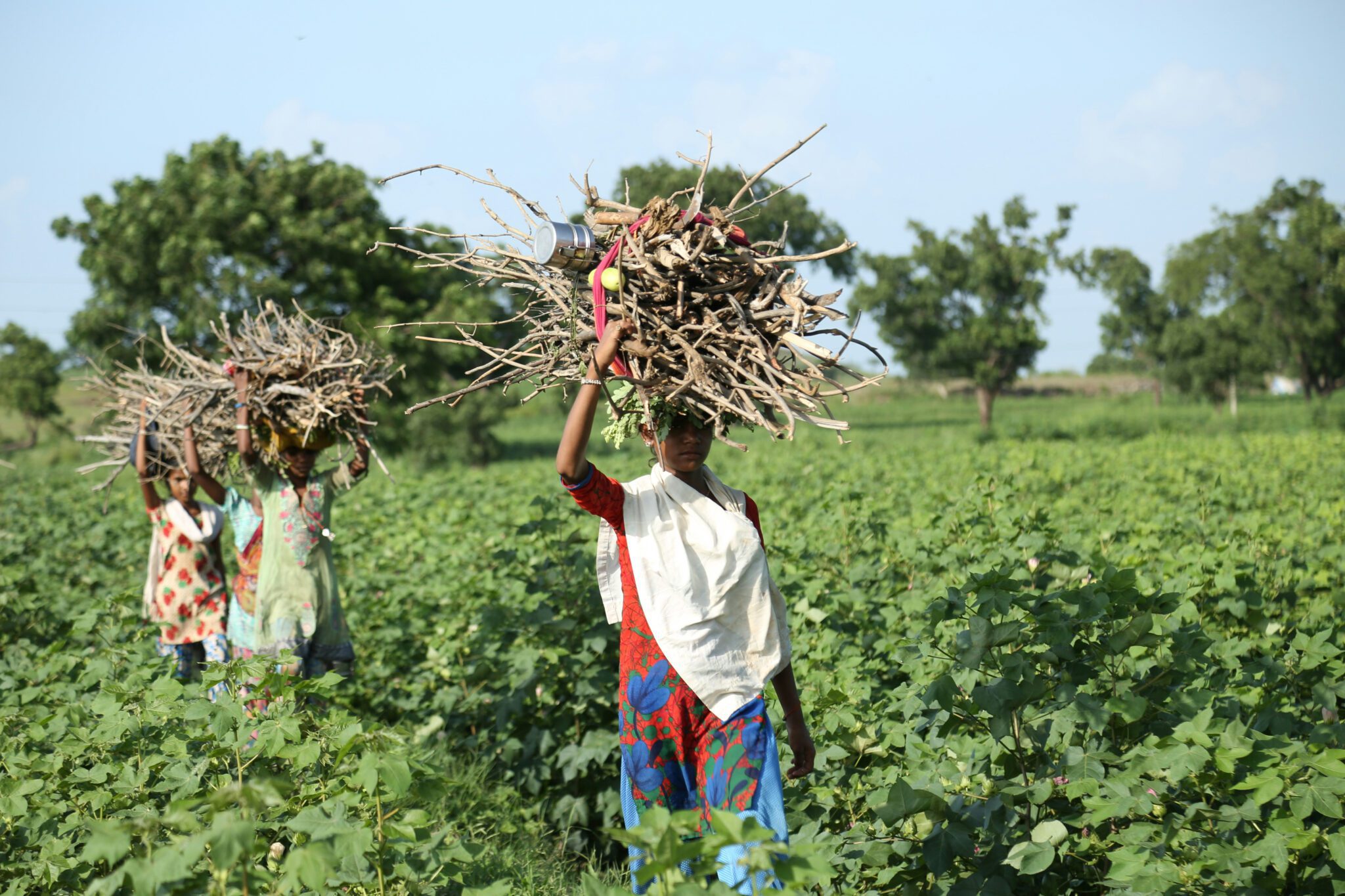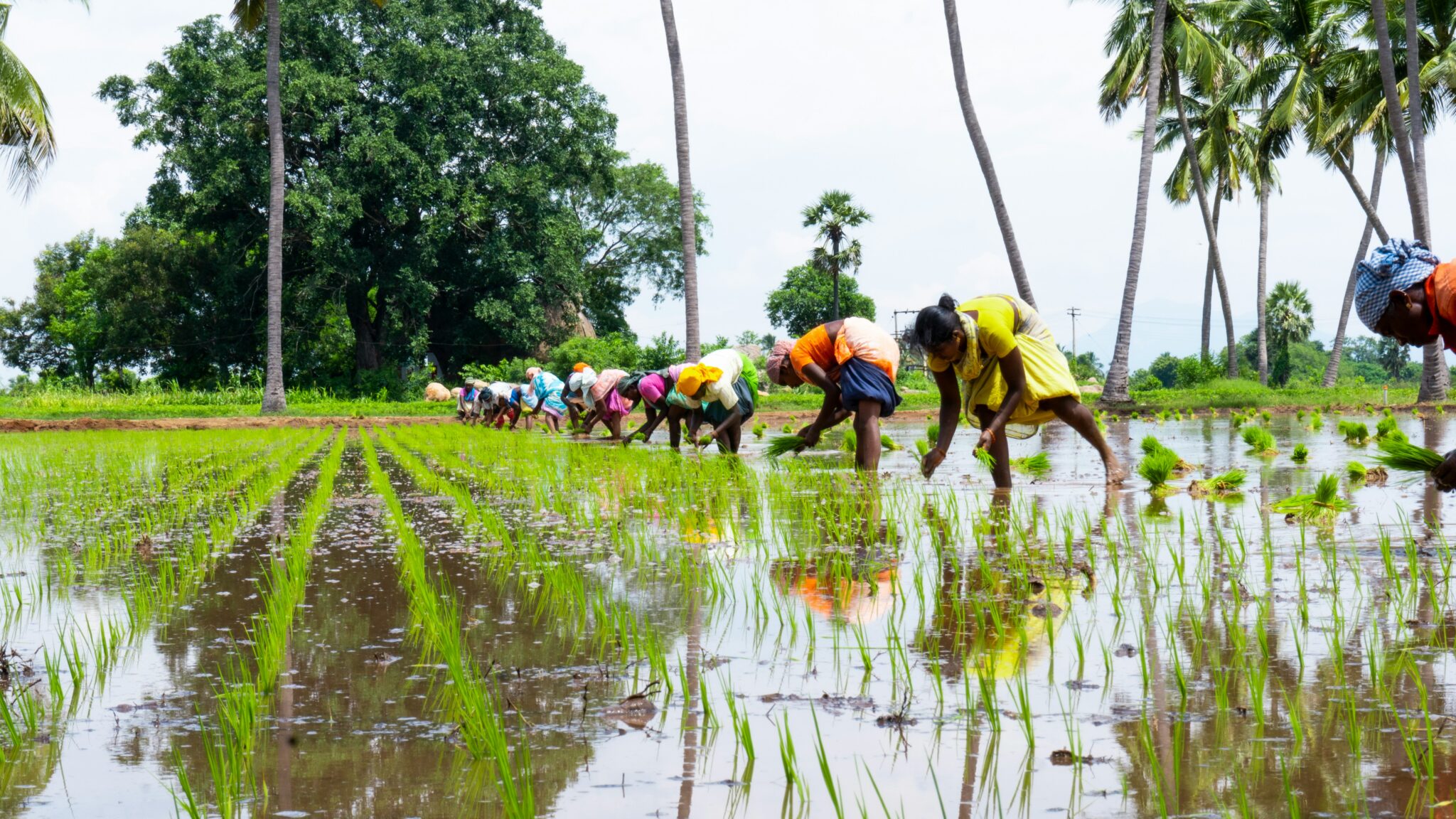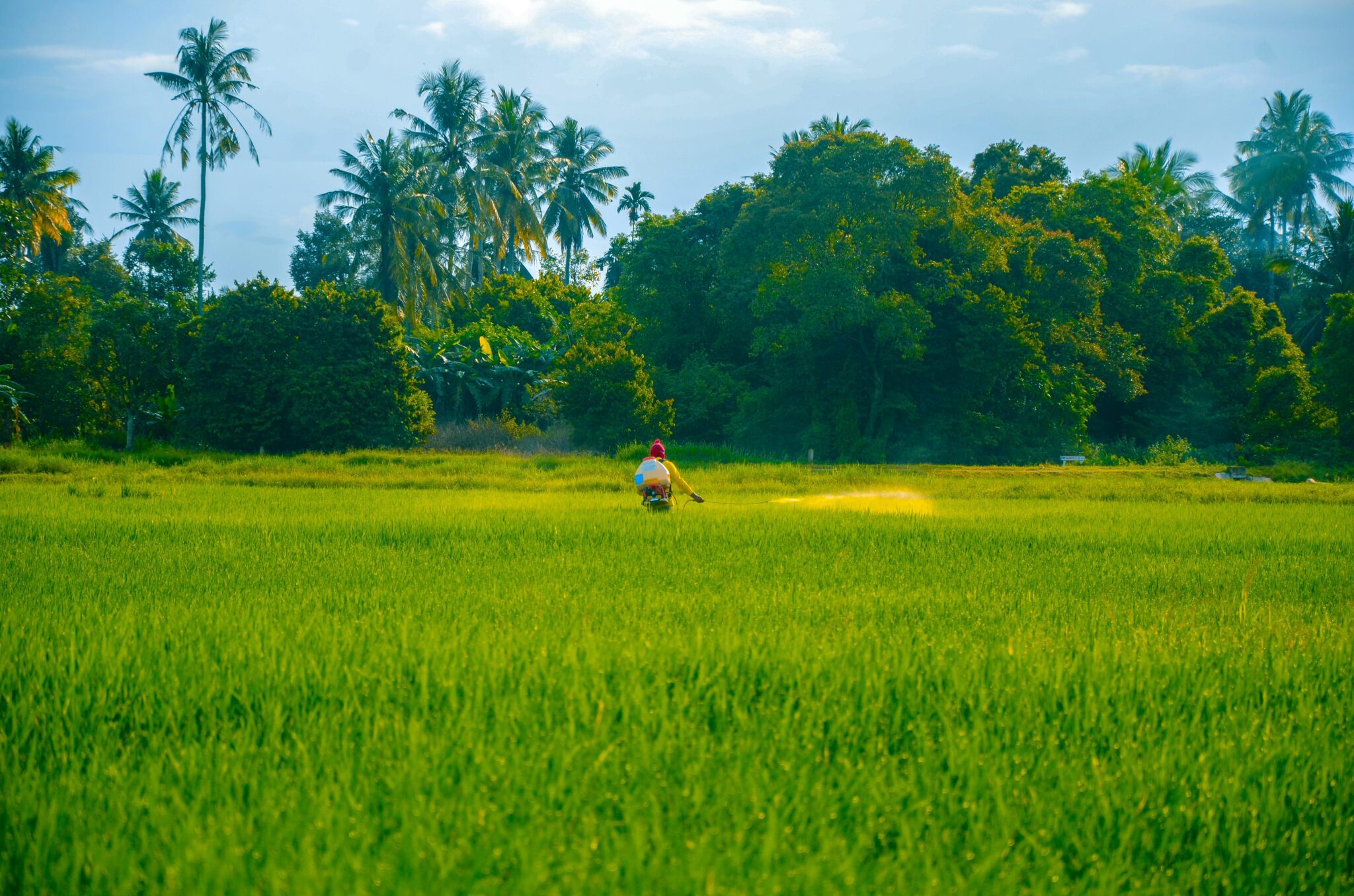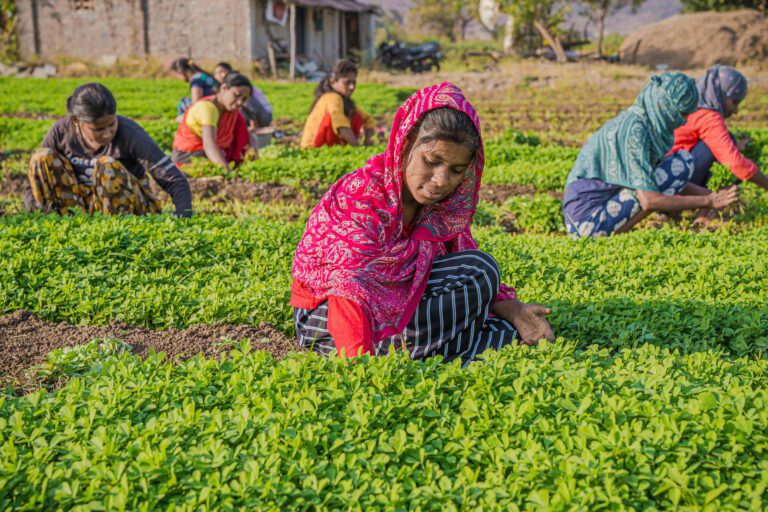Our recent trip to India highlighted the country’s remarkable potential as a source of organic superfoods — but also the hidden challenges rooted deep in its agricultural history.
India is a true treasure chest for superfoods like turmeric, ginger, moringa, and countless Ayurvedic herbs. With a rich and well-documented tradition of natural medicine and agriculture, India offers an incredible range of organic products, renowned worldwide for their quality and health benefits.



However, beneath this abundance lies a complex legacy. Following independence in 1947, India launched the Green Revolution in the 1960s to boost agricultural productivity and feed its growing population. While successful in increasing food production, it also introduced extreme overuse of chemical fertilisers and pesticides, leading to long-term soil degradation, water contamination, and destroyed ecosystems – the aftermath still lingers today. Decades-old chemical residues like DEET, once sprayed widely from airplanes, persist in the soil and water today, with halving times spanning 50 to 100 years. This historic contamination continues to pose challenges for sourcing truly clean, organic ingredients.
The Ever-Shifting Nature of Smallholder Farming
One of the biggest hurdles in organic sourcing from India is the unpredictability of smallholder farming. Unlike large-scale industrial farms, these small farms cannot cultivate the same crops continuously on the same land. Crop rotation is essential to maintaining soil health—meaning a farmer who grew turmeric this season should switch to ginger or wheat next season, or may even leave the land to rest.
This creates a moving target for processors and exporters. A farmer group that supplied premium quantities of turmeric last year may not grow turmeric at all this year. Instead, another group—previously specialising in ginger—may now be growing turmeric. But what happens next season? The landscape shifts again.
For those sourcing multiple organic products like turmeric, ginger, and ashwagandha, this is a logistical nightmare—like herding cats. No single farmer group is dedicated to one crop, and their cultivation plans change yearly based on soil conditions, market demand, and weather patterns.


The Unpredictability of Nature and Farmer Decision-Making
Even when farmers decide on a crop, nature has the final say. Rain can be too little or too much. Winds can be too strong. A sudden invasion of insects, snails, or locusts can wipe out entire fields overnight. Despite meticulous planning, a crop that was supposed to yield abundantly might fail due to unforeseen circumstances.
In response, farmers resort to pesticides or chemical treatments, even in organic farming groups. If even a single farmer in a group makes this choice—whether due to desperation or carelessness—it contaminates the entire batch. Suddenly, an otherwise excellent organic turmeric harvest is disqualified due to pesticide traces from just a few farmers.


The “Can Do” Culture—And the Reality Check
Another challenge in India is the cultural approach to business interactions. In many cases, producers will say “Yes, can do!” even before knowing for sure whether they can fulfil the order. It’s not deception; it’s optimism. The potential for supply exists, but in reality, securing that supply is a complex and uncertain process.
Processors must source from hundreds of farmer groups, each managing dozens or hundreds of smallholder farmers. If one group fails to deliver, processors scramble to source from another—leading to last-minute changes, shortages, or inconsistent quality.
Navigating the Pitfalls of India’s Organic Supply Chain
India’s vibrant biodiversity and centuries-old farming traditions make it a treasure trove for organic superfoods, but sourcing here isn’t for the faint of heart. Beneath the lush green fields and smiling farmers are bureaucratic mazes, fragile ecosystems, and unpredictable risks that can derail even the most well-planned sourcing strategy.
Why We Never Rely on Just One Supplier
The first rule of doing business in India: expect the unexpected. That’s why we never work with just one farmer group or processor. We consolidate volume with a primary partner, but always qualify at least one backup and often a third or even a fourth. These aren’t names on a spreadsheet — we’ve personally visited, vetted, and walked their fields. It’s our way of staying agile and ensuring we can deliver, no matter what.
Certifiers Can Sink Everyone — Even the Innocent
India has a complex organic certification structure governed by APEDA (Agricultural and Processed Food Products Export Development Authority). Under APEDA are dozens of certifying bodies, each overseeing groups of farmers and processors. Here’s the kicker: if just one processor under a certifier gets flagged for non-compliance — even for a totally unrelated crop — the entire certifying body can be suspended.
And when that happens, everyone under that certifier suffers. Farmers who’ve done everything right — passed lab tests, packed their product, booked containers — get an email saying: “Sorry, we can’t issue your organic certificate.” Their product sits idle for months, unsellable, while government red tape grinds slowly through re-approval. Some are forced to sell as conventional. Some lose land. It’s difficult.
The Spice Board Bureaucracy: One Missed Step, and You’re Out
Spices are even tougher. Every export of turmeric or ginger must be routed through the Spice Board of India, which takes a pre-shipment sample, analyses it, and issues an approval letter. But here’s the bureaucratic obstacle: that letter must be dated before the organic transaction certificate is issued. If not? Your whole shipment is void.
There’s no forgiveness in this system. Miss one sequence, and it’s back to square one — regardless of how perfect your product is.
It’s Not Incompetence — It’s a Tough Game
Some assume failures in India come from incompetence or corruption. But we’ve seen firsthand: most of these guys are competent, passionate, and deeply committed to doing good work. They’re just stuck in a system that’s rigid, reactive, and stacked with invisible traps.
That’s why we spend time on the ground, building relationships with producers who are not just capable farmers, but savvy operators who know how to navigate India’s bureaucratic and logistical terrain. They have the network. The skills. The grit.
The Solution: Strong Relationships and On-the-Ground Expertise
So, how do we navigate this treasure chest with hidden pitfalls? The key lies in relationships, direct sourcing, and deep local knowledge.
Unlike companies that rely solely on remote transactions, we go on-site. We meet the suppliers, inspect their operations, and—most importantly—go all the way down to the farm level.
Here’s what we do differently:
- We assess the entire supply chain, not just the processor. This means visiting not just the processing facility, but also their sourcing teams, their field agents, and the actual farmers supplying the crops.
- We look for signs of long-term commitment. Are the relationships genuine? Are the farmers comfortable and engaged, or distant and reserved? Are the farmer group signs fresh (put up yesterday for our visit) or weathered, showing years of collaboration?
- We evaluate fallback options. If one supplier falls through, does the processor have others to rely on? Are they proactive in sourcing alternatives, or are they just rolling the dice?
India’s organic market is rich with potential, but it requires patience, diligence, and expertise. Simply waving a purchase order and expecting flawless execution is a recipe for disappointment. The key is knowing who to trust, who can deliver, and who has the systems in place to handle the inevitable challenges. By prioritising real relationships over transactions, we ensure that we’re working with partners who are structured, reliable, and committed to quality—not just those who promise big things on paper.
© Copyright Abbott Blackstone International GMBH
